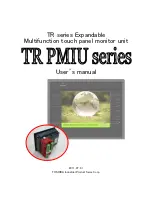
aleo
aleo solar Deutschland GmbH
| Osterstraße 15| 26122 Oldenburg | Germany | service@aleo-solar.com
installation instructions Edition 01/2012 en-GB-Intl (120508b)
Page 33/60
Local regulations may require an additional connection for
potential equalisation, e.g. its own earthing cables that is
connected to the connection units. Only suitable connection
units should be used. In this case, the substructure should be
earthed separately.
Fig. 18 Potential equalisation with cable lug for earthing cable,
diagram
a
: module laminate,
b
: module frame,
c
: clamp,
d
: bolt,
e
: electrical connector,
f
: cable lug,
g
: substructure.
8.8.2.
Earthing with bolts
aleo solar recommends the use of earthing clamps. Electrical
connectors (e.g. WEEBLugs
9
, mainly used in the USA) are
permitted.
Ensure that the electrical connector has a contact surface
area of at least 70 mm².
Fig. 19 Bolt connection with earthing, diagram
a
: bolt,
b
: locking washer,
c
: flat washer,
d
: module frame,
d
: module frame,
e
: electrical connector with spikes,
f
: substructure,
g
: nut bolt.
8.8.3.
Earthing with earthing holes
It is possible to earth a module frame with a bolt connection.
The module frames have two earthing holes on each long side
near the short side and are marked with the earthing symbol.
For potential equalisation when clamping to the narrow sides
or for lay-in systems, only earthing holes should be used.
Fig. 20 Earthing symbol
The diameter of the earthing holes is 4.36 mm; the frame
thickness is 2.5 mm. Use suitable self-cutting bolts and a
locking washer (both made from stainless steel) for a reliable
contact between bolt and eyelet.
9
See Ch. D.1, 'Abbreviations'.
Fig. 21 Potential equalisation with earthing holes, diagram
b
: module laminate,
c
: module frame,
d
: self-cutting bolt,
e
: eyelet,
f
: locking washer.
When installing modules with a bolt connection and using
suitable additional components, the bolt connection can also
provide the required potential equalisation, see Ch. 8.8.2,
'Earthing with bolts'.
8.9.
Lightning protection
WARNING
The planning and installation of the outdoor
and, if necessary, indoor lightning protection
should only be carried out by qualified
professionals.
Be sure to avoid using the module frame or
its protective potential equalisation
(earthing) as an active part of the lightning
protection system.
Be sure to use additional lightning con-
ductors to connect the lightning rods with
the lightning protection earthing. Doing so
ensures the safety and reliability of the
photovoltaic system, as well as its lightning
protection.
If the module frame is earthed, the only
function of this earthing is the protective
potential equalisation between the module
frame and the supporting structure.
a
b
c
d
e
f
g
GID AS020a
GID AS042a
a
b
c
d
e
f
c
b
g
GID AS043a
b
c
d
e
f
GID AS021c
G
ID A
S
033
c
















































